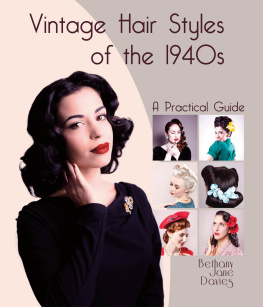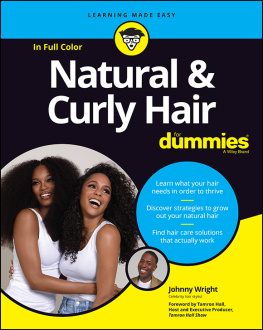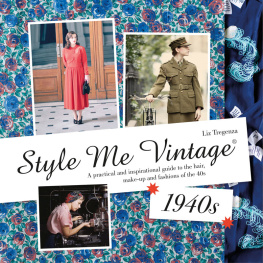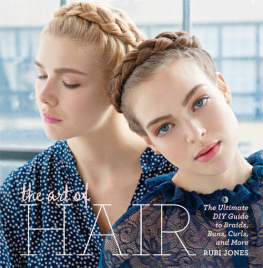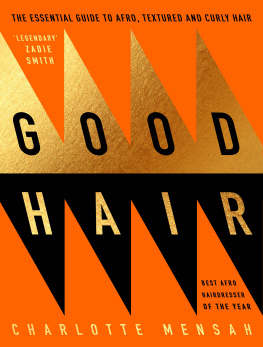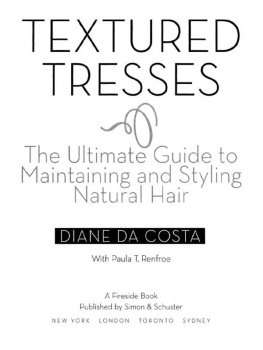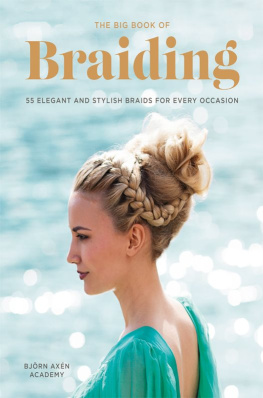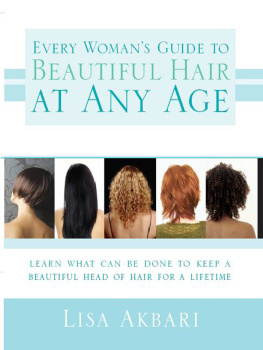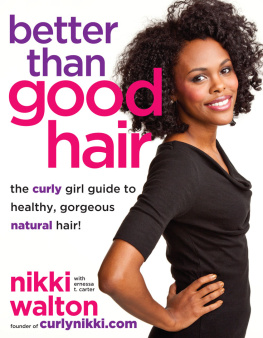Dedication
I would like to dedicate this book to my grandparents and to my wonderful Mum, a bookworm herself. I know she would have been so excited to see my words in print.

Vintage Hair Styles
of the 1940s
A Practical Guide
Bethany Jane Davies

First published in 2015 by
The Crowood Press Ltd
Ramsbury, Marlborough
Wiltshire SN8 2HR
www.crowood.com
This e-book first published in 2015
Bethany Jane Davies 2015
All rights reserved. No part of this publication may be reproduced or transmitted in any form or by any means, electronic or mechanical, including photocopy, recording, or any information storage and retrieval system, without permission in writing from the publishers.
British Library Cataloguing-in-Publication Data
A catalogue record for this book is available from the British Library.
ISBN 978 1 84797 833 2
Cover artwork by We Are Tucano
Contents
Preface: How to Use this Book
I believe that beautiful vintage hairstyles are classically flattering for any face and, hence, will always maintain their relevance within the ever-changing world of fashion trends. Classic vintage looks are accessible to everyone willing to learn the basic skills required to create them.
This book introduces and breaks down the techniques, equipment and building blocks of 1940s hairstyles using step-bystep instructions. However, as with anything creative, it is a skill that will only improve with practice, practice, practice! My advice to anyone embarking on a journey into vintage hairstyling is to pick a style to suit your skill set. Dont jump in with the most complex style involving finger waves and lots of different elements; instead, build up an arsenal of skills as you go along.
Should a style not turn out quite right, do not give up; keep experimenting until you find what works for you and your hair. Hairstyling is not a one size fits all exercise; however, with a basic understanding of the concepts of preparation, correct setting methods, brushing out and styling, you will acquire the skills necessary to succeed. By using this book, you will be able to learn what works best for you and your clients. Furthermore, you will be fully equipped to adapt accordingly to any vintage style and, as a result, confidently tailor the style so that it is most flattering and enhances your beauty.
Within the methods, techniques and how-to sections, I have added a series of troubleshooting tips to help rectify common problems you may encounter while recreating the looks outlined in this book. You will not have the same hair type, length or cut as all the models in the book, but that should not stop you achieving these styles. Shorter silhouettes can be created with long hair and short hair can be formed into waves, rolls and many up styles. Notes for adapting the style to your hair can be found in the tips section below each style.
Chapter 1
Hair in the 1940s | |
History of the 1940s and its Effect on Hairstyles
To truly understand why certain hairstyles came into fashion during the 1940s, one must consider the social circumstances of the time; notably, the after-effects of the Second World War, the influential stars of the silver screen and the legacy of postwar recovery.
Hitlers Third Reich invaded Poland on 1 September 1939; two days later, Britain and France declared war on Germany. The nations engaged in battle were forced to channel their limited resources into the war effort. In the UK, boats that had been used previously to import goods were commandeered for military purposes; therefore, importing any goods considered non-essential became virtually impossible. Food, chemicals, metals, fabrics, soap they all became scarce. Keeping Britains armed forces at war with the Germans yielded a period of austerity that impacted on Britain deeply throughout the 1940s. This factor and the lack of certain products used in hair styling would have a lasting influence on British, and indeed global, hairstyles.
In 1941 the systematic aerial bombing of Britains key strategic cities and ports, known as the Blitz, began in earnest and brought the war directly to the doorsteps of the British people. By June 1941 fabric was in such short supply that clothing was rationed and women were obliged to make do and mend, fixing, tailoring and altering whatever clothing they already had. Fabric was a muchprized commodity not to be wasted on flimsy fashion, but style finds a way to carry on.
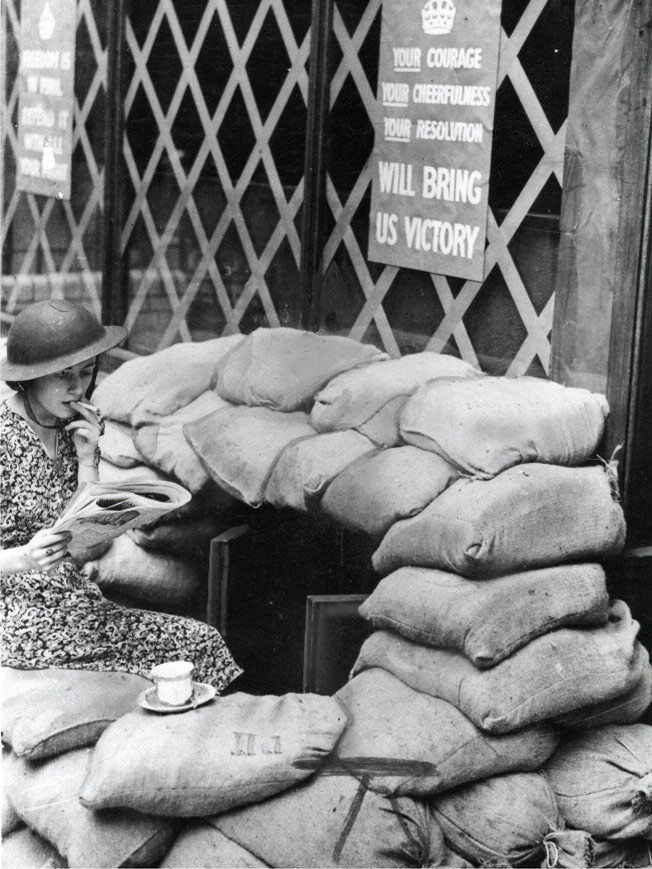
Lady taking a break during the Blitz.
In December 1941, the government announced that all unmarried women between the ages of 20 and 30 were to be called up to the war effort; Britain had become the first nation in history to conscript women into the armed forces. Furthermore, all citizens up to the age of 60, men and women, were required to take part in some form of national service. This meant that, more than ever before, women became active in all aspects of working and military life. They continued to carry out their existing roles, primarily in the service industry, while also filling traditional mens jobs. The women who had to undertake roles previously executed by men had to dress appropriately and manage their hair in accordance with their new-found wartime roles, but this did not stop them showing off their styles.
Women conscripts found themselves in a wide variety of jobs during this period. Numerous women worked in clerical office jobs, managing all public and domestic affairs, supporting undercover and civil operations in administrative and managerial positions. Essentially, women were fundamental to keeping their country going; therefore, there was a need for them to appear formal and smart. However, some became drivers of trucks and ambulances, while others worked as nurses in war zones.
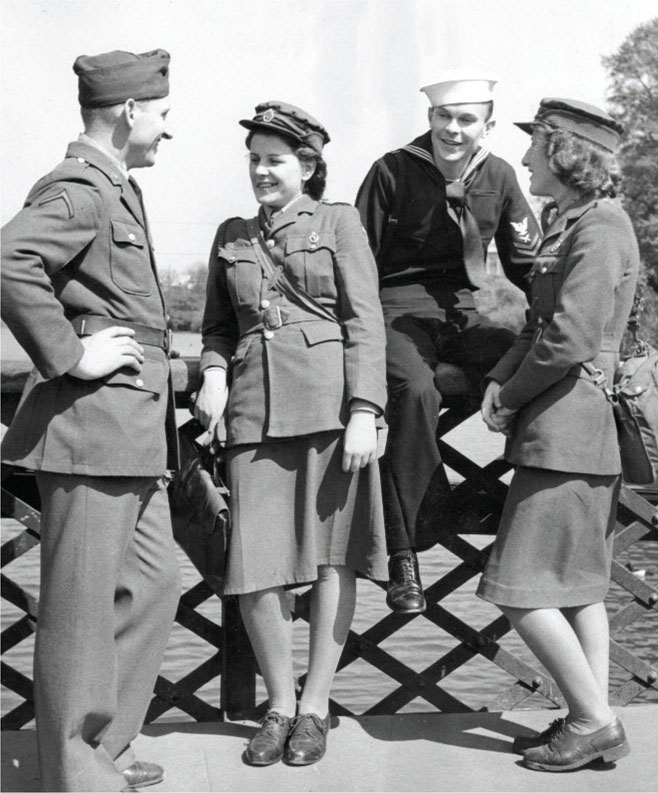
Ladies in uniform.
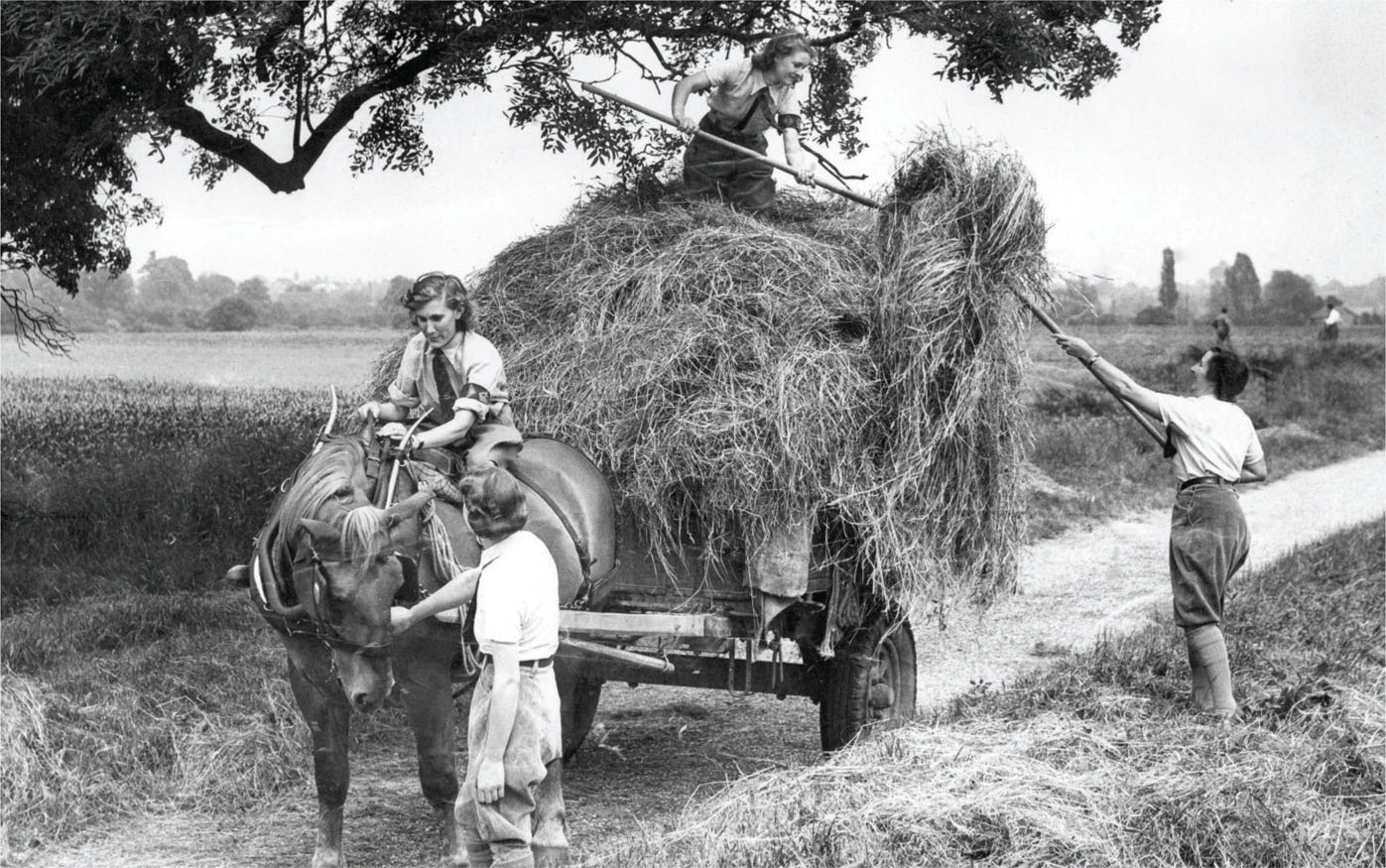
The Womens Land Army.
A large number of women undertook jobs that involved manual labour; for example, many joined the Womens Land Army (WLA), which worked the land, cultivating crops in an attempt to avoid food shortages. Others joined the Timber Corps, which involved cutting down trees and logging. These women wore robust and warm outdoor clothing and they needed to keep their hair out of their eyes so as not to impair their sight, or their ability to wield a tool.
Similarly, the women who worked in factories, munitions and steel plants worked for long periods in dangerous environments surrounded by hazardous chemicals and moving machinery. Their hair needed to be contained, as any loose or unmanaged long hair was at risk of being damaged, pulled out or causing serious harm; therefore, the wearing of hats, scarves and up-dos was frequently seen in the workplace as it was a smart way of being practical and presentable.
Turban-style scarves became an identifiable part of the working womans wardrobe. A well-known pioneer of this style was the American cultural icon Rosie the Riveter, who was featured on a motivational yellow-backed poster, wearing a spotty headscarf, flexing and squeezing her bicep, alongside the slogan We Can Do It. Such propaganda was intended to boost morale and keep up production. In later years, this iconic image became a symbol of feminism and female empowerment, demonstrating the extent to which headscarves were engrained in the wartime culture.
Next page
